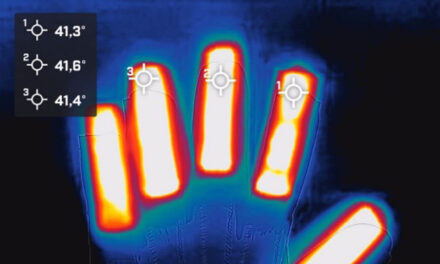End customer demand for highly differentiated and customized products is driving OEM requirements for customized machines. To ensure today’s modern, complex machines meet all their specifications, machine builders need to rely on simulation early and often during the design and verification process. However, to improve speed of innovation and reliance on virtual simulation and minimize prototype and testing, it’s important to correlate the accuracy of these simulations to real-world machine operation in the actual physical environment. Through a closed-loop validation process, Intelligent Performance Engineering provides the ability to verify simulation through real-time feedback from sensor-based machine data.
Responding to complexity: Intelligent performance engineering
Consumers increasingly demand a packaged system of integrated products and services customized to meet their individual needs. As a result, machine builders must be prepared to offer a much broader range of customization options for their off-the-shelf machines that satisfy their customer’s unique requests. At the same time, market demands for improved throughput and performance, energy efficiency, quality and safety have given rise to more complex machines that integrate advanced technology to create smart connected systems. These systems bring together mechanical, electrical, controls, and other capabilities to assist OEMs in producing highly customizable and adaptable machines that are reliable and efficient for their customers. Simultaneously, machine builders are increasingly under threat from low-cost competitors globally. For top-performing manufacturers to thrive in this environment, they must embrace digitalization to drive innovation, differentiation, and cost competitiveness, setting themselves apart from peers. Intelligent Performance Engineering (IPE) offers a path forward, helping OEMs to discover better designs faster and boost productivity.
 IPE enables teams to efficiently evaluate the many variations required for next-generation machines in a virtual environment, efficiently achieving an optimal balance of cost and performance and other vital requirements while achieving maximum reliability. IPE offers three key differentiators to assist machine builders: multi-physics simulation and testing, integrated design and simulation, and closed-loop validation. Multi-physics simulation and testing balances multi-attribute engineering to deliver a broad range of physics and disciplines under one umbrella to optimize the increasing complexity of industrial machines. Integrated design and simulation allow designers and simulation engineers to use the same model in one system, helping to drive innovation and boost productivity through simulation. Simulating these smarter machines in early design phases leads to shorter development time with less risk. Finally, closed-loop validation, the focus of this article, confirms simulations by capturing and testing the relationship between requirements, functional layout, logical implementation, and physical implementation.
IPE enables teams to efficiently evaluate the many variations required for next-generation machines in a virtual environment, efficiently achieving an optimal balance of cost and performance and other vital requirements while achieving maximum reliability. IPE offers three key differentiators to assist machine builders: multi-physics simulation and testing, integrated design and simulation, and closed-loop validation. Multi-physics simulation and testing balances multi-attribute engineering to deliver a broad range of physics and disciplines under one umbrella to optimize the increasing complexity of industrial machines. Integrated design and simulation allow designers and simulation engineers to use the same model in one system, helping to drive innovation and boost productivity through simulation. Simulating these smarter machines in early design phases leads to shorter development time with less risk. Finally, closed-loop validation, the focus of this article, confirms simulations by capturing and testing the relationship between requirements, functional layout, logical implementation, and physical implementation.
Bringing test and simulation together
Closed-loop validation gives machine builders the ability to move seamlessly through design, commissioning, and machine operation in the field and back again. This methodology is built around the machine’s digital twin, helping design, simulation, and test understand and predict the performance of the physical machine under a variety of conditions before, during, and after committing to a physical prototype.
The foundation of the comprehensive digital twin is integrated design and simulation, where all the many engineering disciplines capture simulation and validation results in a centralized repository. Now teams can evaluate the capability and limitation of product variations most efficiently due to the integration between designers, analysts, and live data; all focused on improving key design metrics. Digital threads also help automate sharing information between engineering teams, analyst production, test teams, and service engineers. With a digital twin supported by digital threads, machine builders increase their design flexibility, boost productivity, and improve innovation processes to build the next generation of smart industrial machines.
During the design and simulation stage, validating the virtual machine using a digital twin allows the team to verify designs earlier, test multiple configurations rapidly, and understand the impact of variables on one another without the need for an expensive physical prototype. However, these simulations require a simplification of reality based on very educated assumptions. The virtual digital twin can lack some of the true criteria and true environments that the machine will encounter when operating in the real world. To make sure the simulation assumptions have not overlooked key behavior and that the design has not been oversimplified, it is critical to test and validate the machines in the real environment. And that’s where the closed-loop validation process comes into the picture.
Closing the loop to deliver optimal machines
Once the machine moves to a physical prototype and eventually to real production, it can now be used for test-based and run-time validation. The machine builder can harness and wire out the appropriate sensors to collect real operational machine performance data in real-time, complemented with virtual sensors. Through intensive scrutiny of how a machine is performing, closed-loop validations provide a  real sense of how the machine meets the customer’s needs. Data on variables such as the production rates, noise, and vibration deliver real-time feedback, gathered and looped back into the digital twin to validate and improve the accuracy of test criteria for future simulation models. This process effectively connects simulation data to the design object, ensuring that the simulation models are accurate, giving machine builders greater insight into the validation process and enabling them to fine tune parameters and improve future design and engineering.
real sense of how the machine meets the customer’s needs. Data on variables such as the production rates, noise, and vibration deliver real-time feedback, gathered and looped back into the digital twin to validate and improve the accuracy of test criteria for future simulation models. This process effectively connects simulation data to the design object, ensuring that the simulation models are accurate, giving machine builders greater insight into the validation process and enabling them to fine tune parameters and improve future design and engineering.
Furthermore, closed-loop processes can validate simulations by capturing and validating the relationships between requirements, including the functional layout of the machine, the logical implementation of the automation code, and the physical implementation of the module. Improved validation can lower the cost of ensuring the changes will work as intended before pushing to production.
Benefits over the machine lifecycle
For predictive maintenance: Closed-loop validation continues to deliver value over the entire lifetime of a machine. It can be used to apply smart analytics to machine operational data to discover new insights and create better products. For the machine end-user, knowing the real usage of the machine, they can anticipate maintenance before it transforms into a critical downtime issue. By combining real-world data and the digital twin, they can predict different conditions under real loads. It is feasible to verify how the machine performance is evolving and how the machine behaves to anticipate problems and plan maintenance when needed, thus avoiding the critical condition of an unexpected problem or a downtime situation. This enables predictive maintenance for machine servicing when required, addressing threats to machine performance before they escalate into major issues that can impact the manufacturing line.
For machine performance changes: Bringing the simulation environment together with testing also promotes greater machine adaptability. By applying real-world data to the simulation environment, the machine user can explore how changes to the actual usage of the machine will impact specific performance goals. For example, a machine motor at 100 RPM might be leading to throughput issues and generating too much heat. The machine operator could use the digital twin of the machine that has incorporated real-world operational data to quickly evaluate a variety of ‘what if’ scenarios and find that running the motor at 70 RPM still delivers the desired throughput without impacting the overall performance of the machine.
For onsite commissioning: When the machine is ready for customer delivery, the closed-loop validation guarantees shorter commissioning times. The digital twin can support virtual commissioning prior to the actual physical installation on the customer shop floor, virtualizing a large portion of the verification and optimization process required in commissioning. Now engineers can virtually commission the programmable logic controller (PLC) to the machine’s simulation model lowering the risk and time needed for training and real commissioning.
For machine engineering: As for the machine builder, closed-loop validation over the lifetime of the machine operation significantly benefits the quality of their future products. They can leverage the power of the Industrial Internet of Things (IIoT) to collect product performance data from the field in real-time into a centralized and safe environment. This information is then incorporated back into the digital twin to improve the accuracy of the models over time by analyzing data from the equipment’s performance. Incorporating this wealth of data into the digital twin, the machine builder can leverage it to improve performance and production for the next generation of machines.
Evaluate machine component performance: This data also reduces follow-on development costs by giving machine builders and their suppliers the ability to virtually validate component performance in parallel to design when it is cheaper and more effective. That helps ensure that customized variations work as they are intended to, before going to production.
Producing fully optimized machines faster
Closed-loop validation brings real-life data and environment into the design engineering environment to improve the overall performance, design, and capabilities of next-generation machines to quickly address customer issues over the machine’s lifecycle.
When combined with the other powerful capabilities offered by Intelligent Performance Engineering (IPE) —multi-physics simulation and integrated design and simulation – IPE enables machine builders to confidently meet ever-evolving market demands. Now it is possible to quickly and cost-effectively deliver improved performance, energy efficiency, and safety with today’s and tomorrow’s ever-more complex machines that must integrate advanced technology. In unison, they can design and deliver highly differentiated, custom machines to meet the end customer’s expectations for highly personalized products.
Software solutions
Siemens Digital Industries Software drives the transformation to enable a digital enterprise where engineering, manufacturing, and electronics design meet tomorrow.
Xcelerator is a comprehensive, integrated portfolio of software, services and an application development platform. The portfolio accelerates the transformation of businesses into digital enterprises. It unlocks a powerful industrial network effect – essential requirements to leverage complexity as a competitive advantage, no matter the industry or company, to transition seamlessly to create tomorrow’s complex, efficient machines.
Rahul Garg is the Vice President for Industrial Machinery & SMB Program, responsible for defining and delivering key strategic initiatives and solutions and global business development. He and his team are responsible for identifying key initiatives and developing solutions for the industry while working closely with industry leading customers and providing thought leadership on new and emerging issues faced by the machinery industry. Rahul’s experience and insight are derived from 25 year career delivering software-based solutions for product engineering and manufacturing innovation for the global manufacturing industry, spanning a career in R&D to program management, sales and P&L management and having focused exclusively on the industrial machinery and heavy equipment industry since 2007.







